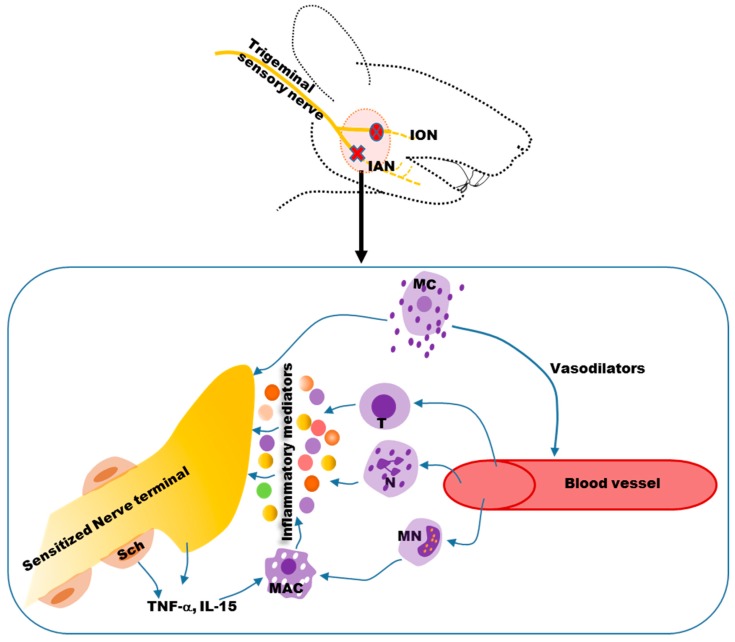Figure 1.
The immune response near the site of a nerve injury sensitizes the nerve terminals. Resident mast cells (MC) are activated and release vasodilators that act on blood vessels, leading to infiltration of immune cells, such as neutrophils, monocytes and T-lymphocytes. Monocytes differentiate into macrophages. These immune cells release inflammatory mediators that sensitize terminals of injured and uninjured nerves. Schwann cells (Sch) that cover the myelinated nerves release cytokines (e.g., TNF-α, IL-15) that also facilitate the recruitment and activation of macrophages. ION: Inferior orbital nerve; IAN: Inferior alveolar nerve; MC: Mast cell; T: T-lymphocyte; N: Neutrophil; MN: Monocyte; MAC: Macrophage; TNF-α: Tumor necrosis factor alpha; IL-15: Interleukin 15.

